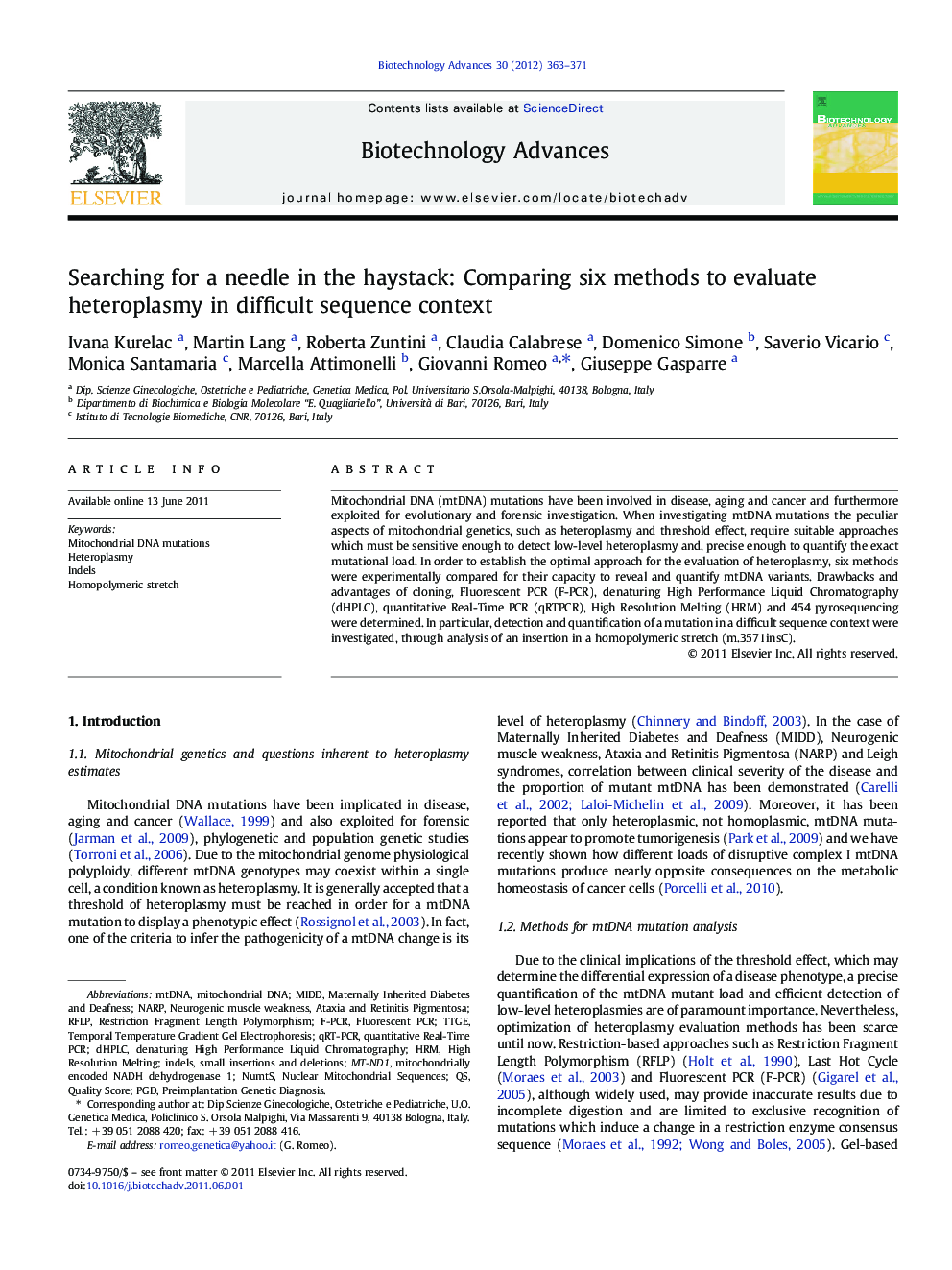| Article ID | Journal | Published Year | Pages | File Type |
|---|---|---|---|---|
| 14610 | Biotechnology Advances | 2012 | 9 Pages |
Mitochondrial DNA (mtDNA) mutations have been involved in disease, aging and cancer and furthermore exploited for evolutionary and forensic investigation. When investigating mtDNA mutations the peculiar aspects of mitochondrial genetics, such as heteroplasmy and threshold effect, require suitable approaches which must be sensitive enough to detect low-level heteroplasmy and, precise enough to quantify the exact mutational load. In order to establish the optimal approach for the evaluation of heteroplasmy, six methods were experimentally compared for their capacity to reveal and quantify mtDNA variants. Drawbacks and advantages of cloning, Fluorescent PCR (F-PCR), denaturing High Performance Liquid Chromatography (dHPLC), quantitative Real-Time PCR (qRTPCR), High Resolution Melting (HRM) and 454 pyrosequencing were determined. In particular, detection and quantification of a mutation in a difficult sequence context were investigated, through analysis of an insertion in a homopolymeric stretch (m.3571insC).
